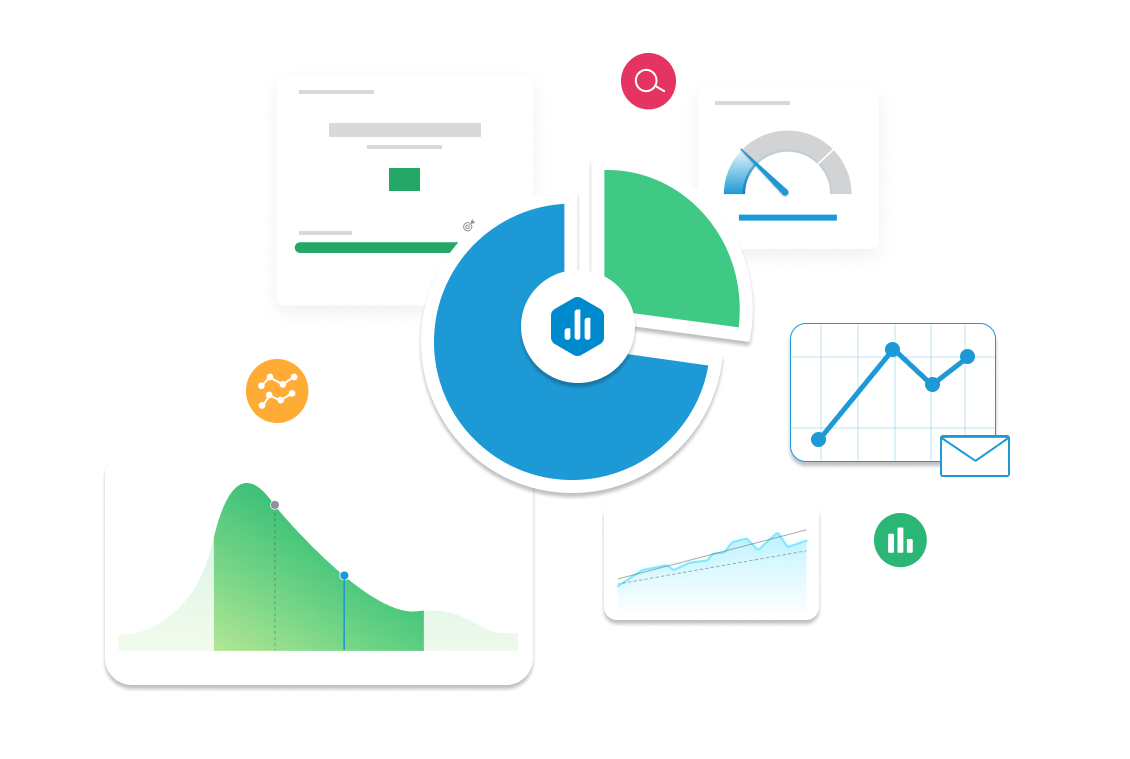Engagement Rate
The engagement rate serves as a significant KPI in marketing because it shows how actively the audience interacts with your content. It is comprised of likes, construction, sharing, and clicking thas provides metrics on content effectiveness as well as audience’s interest. When the audience engagement rate is high, it indicates that your audience’s connection and relationships with you are strong which is highly beneficial in adjusting a marketing plan.

| Category |
Marketing |
|---|---|
| Type |
Lagging indicator |
| Calculation |
Engagement Rate = (Total Engagements / Total Impressions) × 100 |
| Measure |
Engagement rate reflects how actively users interact with content through likes, shares, comments, and clicks. A higher engagement rate indicates strong audience connection and content effectiveness. |
| Data Sources: |
Meta Business Suite, Twitter Analytics, LinkedIn Insights, TikTok Analytics, YouTube Studio, Google Analytics |
| Frequency |
Real-time, Daily, Weekly, Monthly |
Example target
Increase engagement rate by 20% in Q3 by optimizing content strategy and encouraging audience interaction.
Example Reports Use Case
Engagement rate helps marketers assess content performance and audience responsiveness. A social media manager may track this KPI to refine content strategy, while a digital marketer may analyze engagement trends to optimize ad targeting and messaging.
What is Engagement Rate
Engagement rate is a key marketing metric that shows how actively people interact with your content. It measures the level of audience interest by tracking actions like likes, shares, comments, clicks, and saves on platforms like social media, email, or websites. In short, it tells you how well your content connects with your audience.
This KPI is important because high engagement often means your message is resonating—people aren’t just seeing your content, they’re responding to it. That can lead to stronger brand loyalty, better reach, and higher conversion potential.
The basic formula is:
Engagement Rate = (Total Engagements ÷ Total Impressions or Followers) × 100
For example, if a post gets 500 likes, shares, and comments, and was seen by 10,000 people, your engagement rate is 5%. Engagement rate helps marketers evaluate performance, compare content types, and fine-tune their strategies for better audience connection and growth.
How to Calculate Engagement Rate Variants
Engagement rate measures how much people interact with your content. The basic formula is:
Engagement Rate = (Total Engagements ÷ Total Impressions or Followers) × 100
But depending on what you’re measuring, there are helpful variations:
1. Engagement Rate by Post
This shows how a single piece of content performs.
Example: If a post gets 200 likes, comments, and shares and had 5,000 impressions:
(200 ÷ 5,000) × 100 = 4%
2. Monthly Engagement Rate
Add up all your posts’ engagements and divide by total impressions or followers for the month. This helps track performance over time and spot trends.
3. Engagement Rate by Channel
Break it down by platform (Instagram, Twitter, LinkedIn) to see where your content gets the most response.
Example: Instagram may have a 6% rate while LinkedIn is 2%—this helps decide where to focus your efforts.
Why Engagement Rate Matters
Engagement rate is a key indicator of how well your content connects with your audience. It doesn’t just measure reach—it tells you if people care enough to like, comment, share, or click. This makes it essential for understanding brand relevance and the effectiveness of your messaging.
High engagement often leads to greater visibility (especially on social platforms) and better conversion potential, making it closely tied to goals like growth, efficiency, and profitability. For example, a post with 10,000 views and a 7% engagement rate is performing better than one with 50,000 views but only 1% engagement—it’s reaching the right people.
Marketers rely on engagement rate to refine content strategies, sales teams can use it to assess campaign appeal, and executives can track brand health over time. Monitoring it regularly helps identify what works, what doesn’t, and where to focus your efforts for better customer connection and business results.
Related KPIs to Engagement Rate
Engagement rate works best when viewed alongside other key metrics that reflect how users interact with your content and brand. These connected KPIs help you understand not just how much engagement you’re getting, but what it leads to.
Engagement Rate vs. Reach or Impressions
Engagement rate tells you the quality of interactions, while reach or impressions measure quantity. A post might have high impressions but low engagement, signaling it reached the wrong audience or lacked impact. Tracking both helps fine-tune targeting and messaging.
Engagement Rate vs. Click-Through Rate (CTR)
CTR focuses on clicks, while engagement includes likes, shares, and comments. A high engagement rate but low CTR may mean your content is interesting but not driving action. Together, they show if your audience is engaging and converting.
Engagement Rate vs. Conversion Rate
Engagement is the starting point. If engagement is high but conversions are low, your funnel may need work.
These metrics together guide smarter content and campaign strategies.



